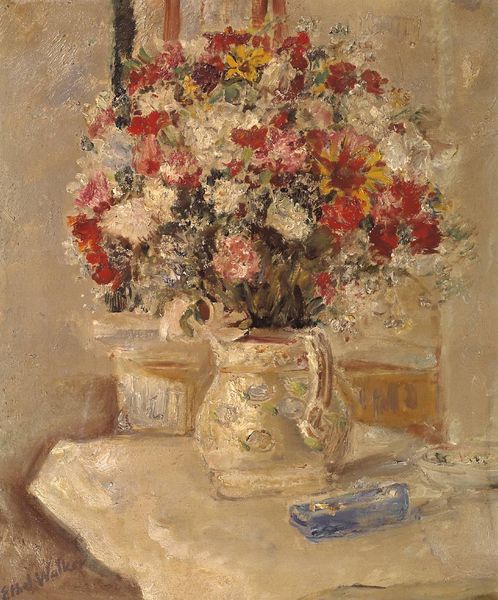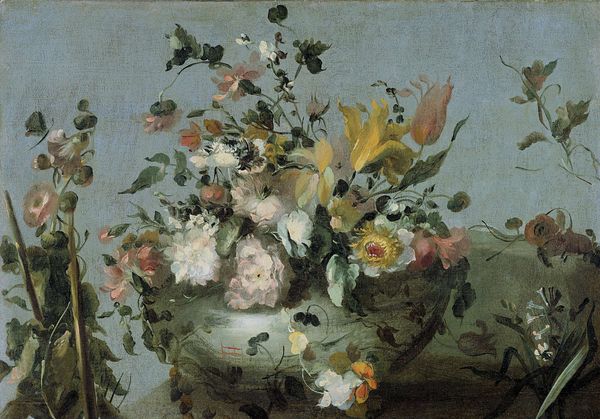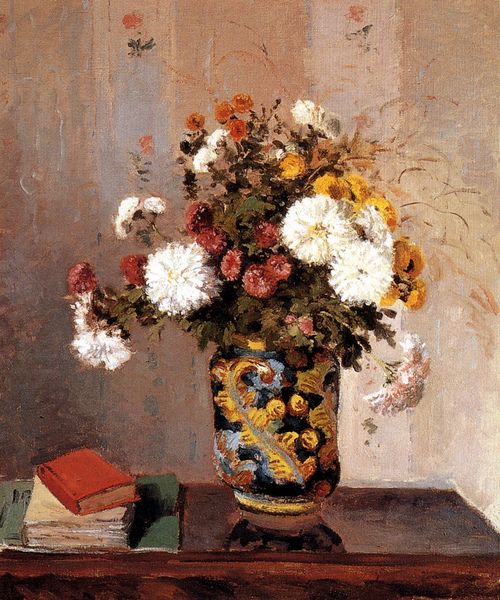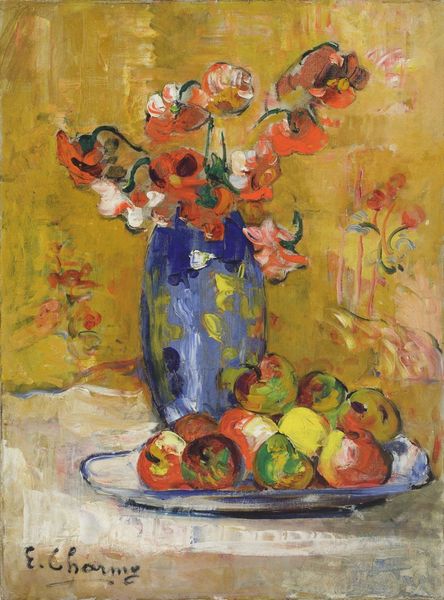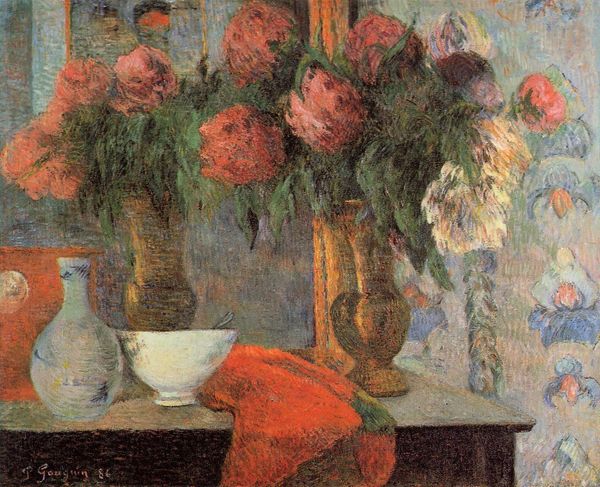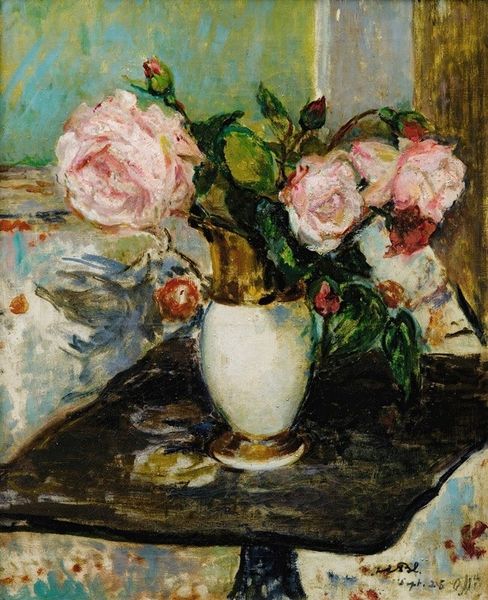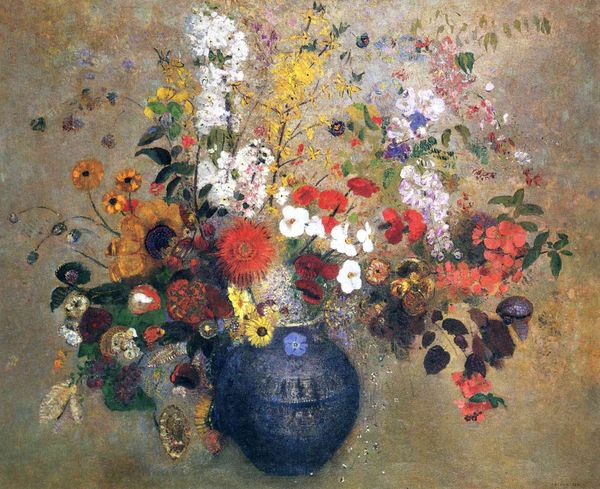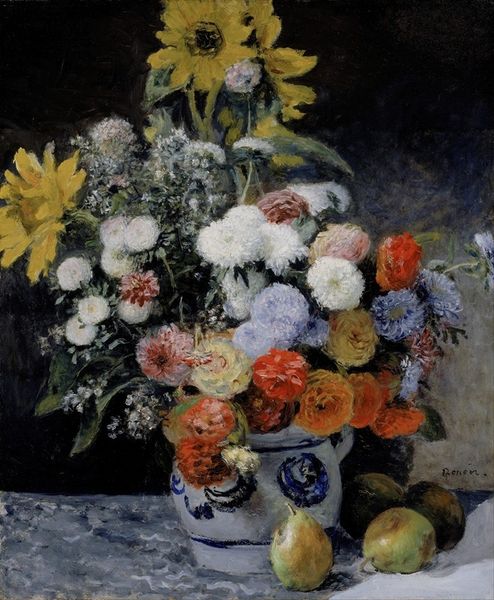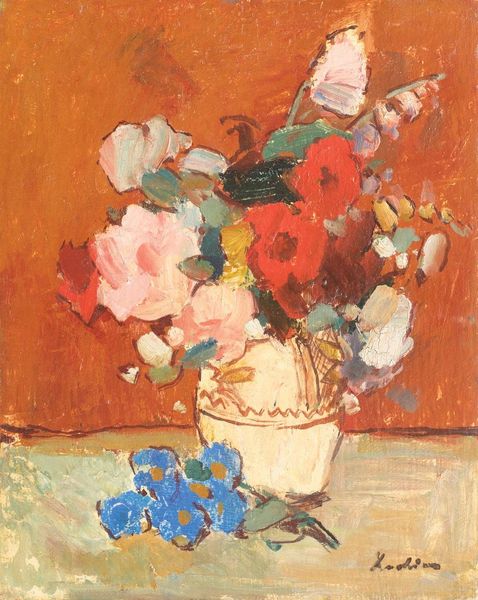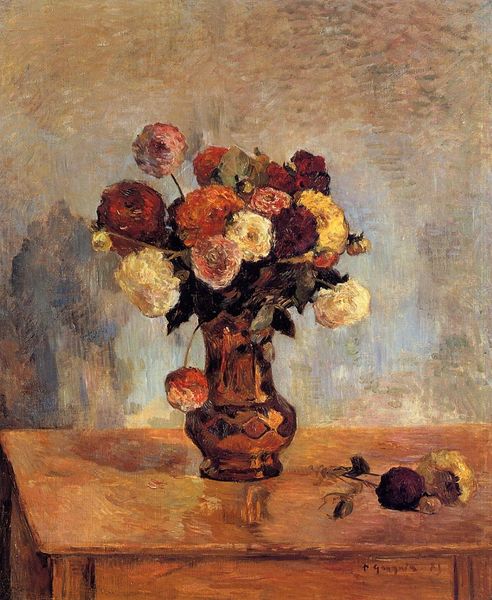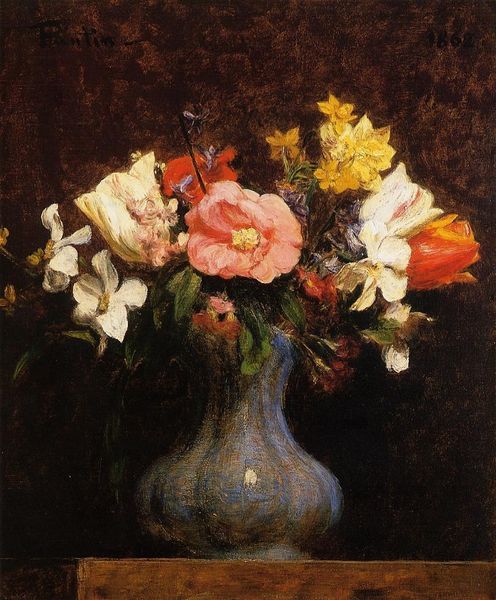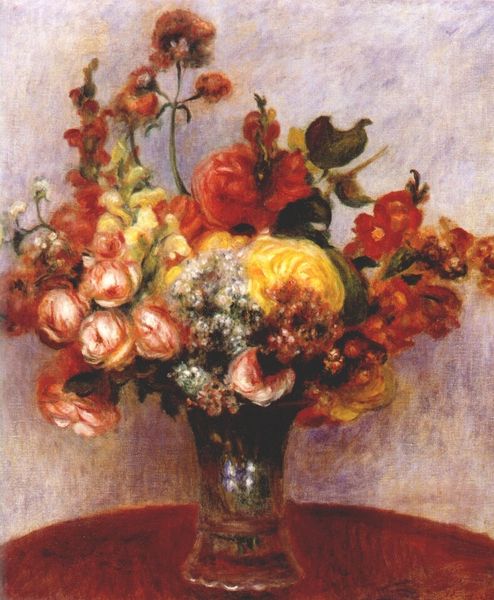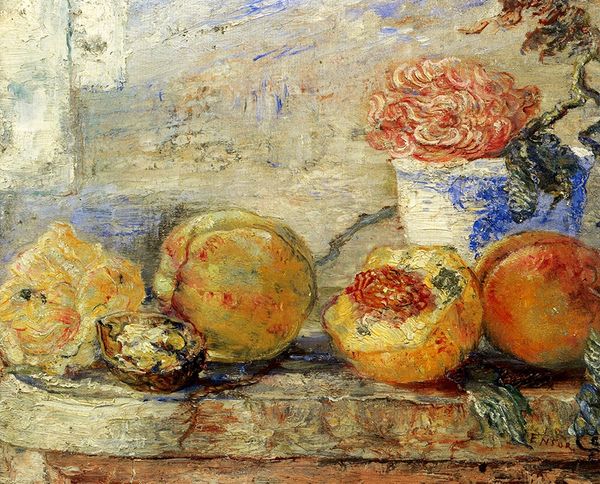
Dimensions: 55.9 x 46.1 cm
Copyright: Public domain
Editor: Berthe Morisot's "Dahlias," an oil painting from 1876. It's got a certain looseness, a casual intimacy. The blooms in the vase seem almost to spill out, and the whole scene has this wonderfully unfinished quality. What strikes you most about it? Curator: The flowers, of course, are the most obvious feature. But it's the fan, lying almost forgotten at the edge, and the scattering of fallen petals that holds my gaze. The dahlias represent transient beauty, a fleeting moment captured in paint. While the fan speaks of societal expectations and the curated appearance within the domestic sphere. Editor: I hadn’t thought of the fan that way, as a symbol of…restriction. So, you’re saying the contrast suggests tension between natural, free beauty, and social constraint? Curator: Exactly! Notice how Morisot handles the paint. The fluidity and softness with which she renders the dahlias mirrors their ephemeral nature. Dahlias in the late 19th century, coming into fashion, were heavily coded as feminine—symbols of grace but also domesticity. Editor: So even choosing dahlias…it’s a statement? Curator: Perhaps. It suggests Morisot was keenly aware of the visual language around her, deliberately choosing and arranging objects laden with meaning, and then subtly subverting them with her impressionistic touch, her free handling of paint. Editor: That tension makes it much more complex. I assumed it was just a pretty still life. Curator: It *is* a pretty still life! But consider how the symbolism adds layers of interpretation, reflecting both the beauty and the constraints of Morisot’s world. It reminds us that visual culture carries layers of cultural meaning. Editor: Absolutely. It’s given me so much to think about.
Comments
No comments
Be the first to comment and join the conversation on the ultimate creative platform.
